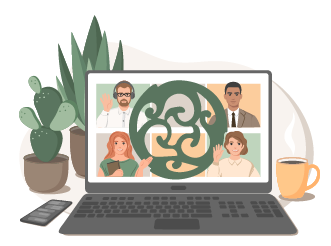Loading...
Document Type
Paper
Event Website
http://www.mythsoc.org/mythcon/mythcon-51.htm
Start Date
31-7-2021 4:30 PM
End Date
31-7-2021 5:15 PM
Description
In this talk, I argue that the “realization” of history is an important aim of Tolkien’s art. Tolkien’s desire to create a new mythology for England, which is well known, is in part a response to the shifting ground upon which he stood, in reaction to what Marx and Engels in the Communist Manifestohad called the “constant revolutionizing” and the “cosmopolitan character” of bourgeois society, industrial civilization, imperialism, and the rise of monopoly capital. Tolkien’s yearning for a mythic past, despite its clear nationalism and chauvinism at first, reflected a deep desire to connect his modern world with an august, barely accessible past through forms of historical narrative. This is not an escape into a mythical, premodern realm as is frequently imagined. Rather, it is an attempt to take the broken and disconnected fragments of culture and put them together into a meaningful history, evoking what Tolkien would call “the seamless web of story.” Fredric Jameson, following Jean-François Lyotard, refers to this as “the desire called Marx,” in effect an urgent need to connect up the various shreds in the fabric of history to form a continuous narrative. Tolkien’s experiments with different genres and styles betray the difficulties he had in organizing this overall narrative project, but his impulse in producing a grand narrative involving myth, fairy story, romance, history, and the modern novelistic form is to give shape to a world that had, in his view, lost its sense. Through his efforts, Tolkien’s great legendarium provides a history for a world that had forgotten how to think historically.
Tech Mod: Cami Agan
Creative Commons License

This work is licensed under a Creative Commons Attribution-NonCommercial-No Derivative Works 4.0 International License.
Included in
Realizing History: Tolkien and the Desire called Marx
In this talk, I argue that the “realization” of history is an important aim of Tolkien’s art. Tolkien’s desire to create a new mythology for England, which is well known, is in part a response to the shifting ground upon which he stood, in reaction to what Marx and Engels in the Communist Manifestohad called the “constant revolutionizing” and the “cosmopolitan character” of bourgeois society, industrial civilization, imperialism, and the rise of monopoly capital. Tolkien’s yearning for a mythic past, despite its clear nationalism and chauvinism at first, reflected a deep desire to connect his modern world with an august, barely accessible past through forms of historical narrative. This is not an escape into a mythical, premodern realm as is frequently imagined. Rather, it is an attempt to take the broken and disconnected fragments of culture and put them together into a meaningful history, evoking what Tolkien would call “the seamless web of story.” Fredric Jameson, following Jean-François Lyotard, refers to this as “the desire called Marx,” in effect an urgent need to connect up the various shreds in the fabric of history to form a continuous narrative. Tolkien’s experiments with different genres and styles betray the difficulties he had in organizing this overall narrative project, but his impulse in producing a grand narrative involving myth, fairy story, romance, history, and the modern novelistic form is to give shape to a world that had, in his view, lost its sense. Through his efforts, Tolkien’s great legendarium provides a history for a world that had forgotten how to think historically.
Tech Mod: Cami Agan
https://dc.swosu.edu/mythcon/mc51/schedule/21



Comments
Recorded Session